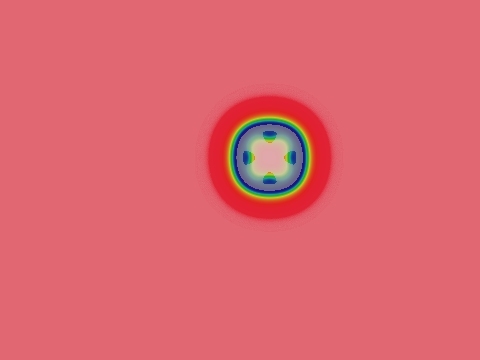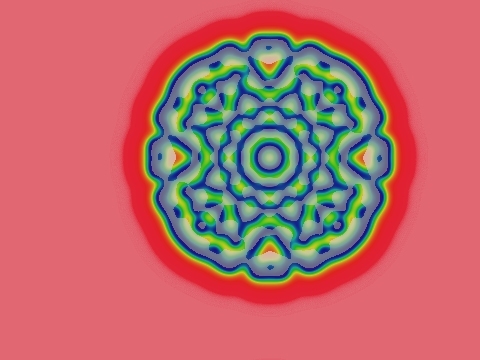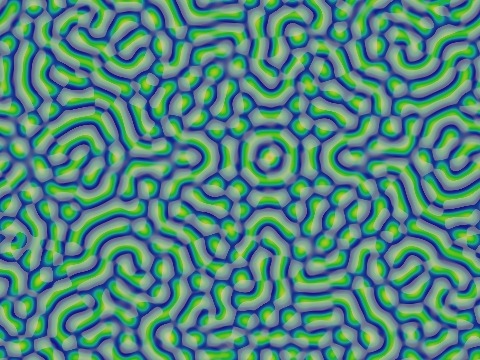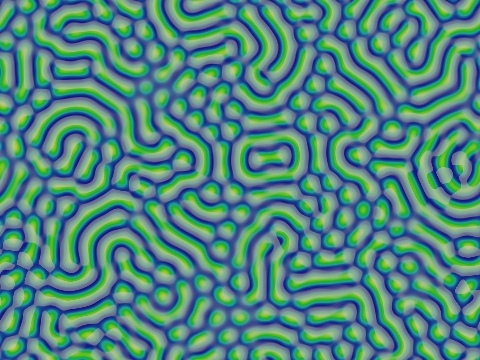Gray-Scott Model at F 0.0380, k 0.0590
These images and movie demonstrate the behavior of the Gray-Scott reaction-diffusion system with σ=Du/Dv=2 and parameters F=0.0380, k=0.0590.
All initial shapes become loops that grow with smooth outer edges and standing waves of concentric rings and negative solitons on the interior.
Even when starting with complete symmetry as shown here, slight irregularities (invisible at first) ensure the pattern will eventually become asymmetrical. Some of this can be seen here if you look closely; after another 125,000 tu the central loop has lost its symmetry too.
Clumps of negative solitons and parallel sets of negative worms co-exist, but the latter prevail in the long run. The pattern continues evolving for well over 500,000 tu. (glossary of terms)
 increase F increase F
 | |||
 decrease k  |


|
15 frames/sec.; each fr. is 64 iter. steps = 32 tu; 1800 fr. total (57,600 tu) |  increase k 
|

|


| ||
 decrease F decrease F
 |
In these images:
- Color indicates level of u, ranging from purple (lowest u values) through blue, aqua, green, yellow and pink/red (highest u values)
- Areas where u is increasing are lightened to a light pastel tone; where u is decreasing the color is vivid.
- In areas where u is changing by less than ±3×10-6 per tu, an intermediate pastel color is seen. This includes areas that are in steady state or equilibrium.
''tu'' is the dimensionless unit of time, and ''lu'' the dimensionless unit of length, implicit in the equations that define the reaction-diffusion model. The grids for these simulations use Δx=1/143 lu and Δt=1/2 tu; the system is 3.2 lu wide. The simulation meets itself at the edges (periodic boundary condition); all images tile seamlessly if used as wallpaper.
Go back to Gray-Scott pattern index
This page was written in the "embarrassingly readable" markup language RHTF, and was last updated on 2015 Nov 07.
 s.27
s.27